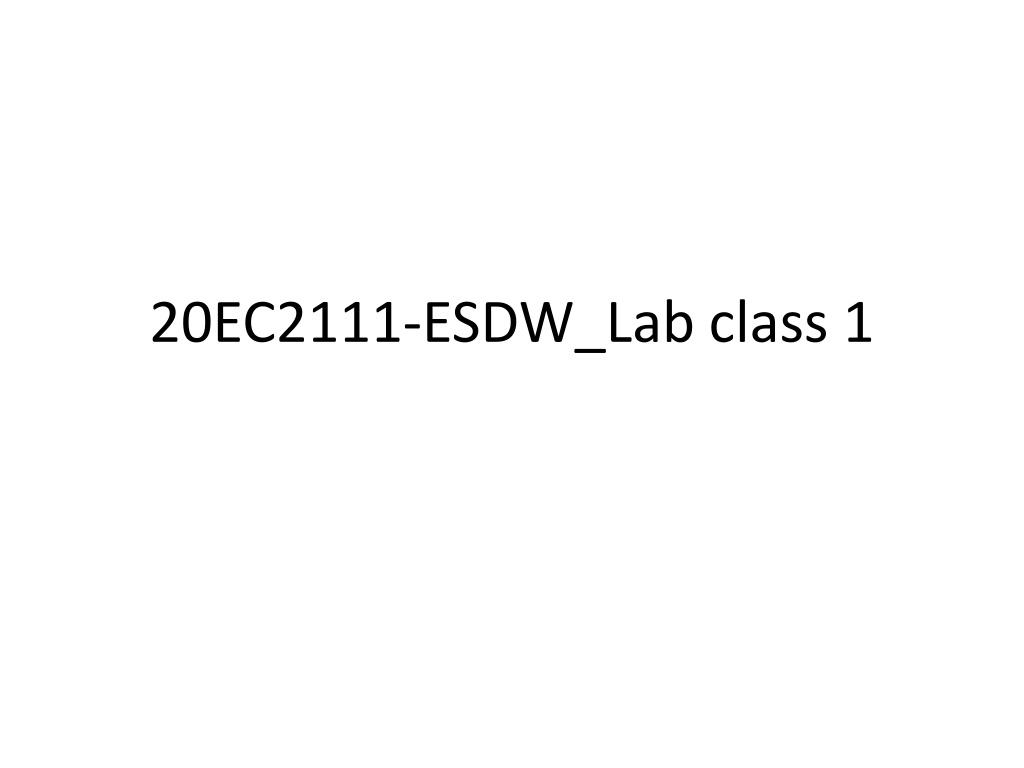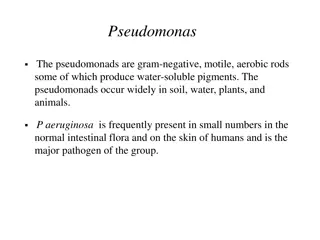Electronic Design Automation with Proteus Software Suite
Dive into the world of electronic design automation with the Proteus Design Suite, a powerful software tool primarily used by engineers and technicians to create schematics and printed circuit boards. Learn about the software's features, installation procedures, and PCB design capabilities, along with conducting experiments like temperature-controlled fan design and implementation through simulation and hardware implementation.
Download Presentation

Please find below an Image/Link to download the presentation.
The content on the website is provided AS IS for your information and personal use only. It may not be sold, licensed, or shared on other websites without obtaining consent from the author. Download presentation by click this link. If you encounter any issues during the download, it is possible that the publisher has removed the file from their server.
E N D
Presentation Transcript
Contents Software tools Installation of software tools Expt 1 explanation
Software tools Proteus software PCB Wizard
Proteus tool The Proteus Design Suite is a proprietary software tool suite used primarily for electronic design automation. The software is used mainly engineers and technicians to create schematics and electronic prints for manufacturing printed circuit boards. The Proteus Design Suite for schematic capture, simulation, and PCB (Printed Circuit Board) layout design. Schematic capture in the Proteus Design Suite is used for both the simulation of designs and as the design phase of a PCB layout project. It is therefore a core component and is included with all product configurations. by electronic design is a Windows application
Proteus tool link Proteus software https://drive.google.com/open?id=1a1M9z0upqo DGQYeLE6X4JTpYWRFd8yUX Installation Procedure , demo video Proteus installation process https://youtu.be/HcoixH75r_Y Proteus introduction https://youtu.be/oxsH72vpwpc
PCB Wizard PCB Wizard is a powerful package for designing single-sided and double-sided printed circuit boards (PCBs). It provides a comprehensive range of tools covering all the traditional steps in PCB production, including schematic drawing, schematic capture, component placement, automatic routing etc.
PCB Wizard link PCB Wizard https://drive.google.com/open?id=1Kajr0p5bBolS gAjkIowoqZa885OblQKE Installation procedure https://www.youtube.com/watch?v=VpdFo3oM_fE
Expt 1: Temperature controlled fan Lab Experiment 1-Simulation https://youtu.be/M4Tkgx087Pg Experiment 1-Hardware implementation https://youtu.be/RkTdtew7CgMLab
Exp No 1. Temperature Controlled FAN To design and implement the Temperature Controlled FAN using LM393 Components Required: LM 393 Resistors (1K, 10K) Transistor (TIP122) DC fan Thermistor Power Supply
Explanation of LM393 Op-amp basically has Voltage Comparator inside, which has two inputs, one is inverting input and second is non-inverting input. When voltage at non-inverting input (+) is higher than the voltage at inverting input (-), then the output of comparator is High. And if the voltage of inverting input (-) is Higher than non-inverting end (+), then output is LOW. Op-amps have large gain and usually used as VoltageAmplifier. Some Op-amps have more than one comparator inside (op-amp LM358 has two, LM324 has four) and some have just one comparator like LM741. The application of this IC mainly includes an adder, subtractor, voltage follower, integrator and differentiator. The output of the operational amplifier is the product of the gain and the input voltage
Role of Thermistor The key component of this temperature controlled fan circuit is Thermistor, which has been used to detect the rise in temperature. Thermistor is temperature sensitive resistor, whose resistance changes according to the temperature. There are two types of thermistor NTC (Negative Temperature Co-efficient) PTC (Positive Temperature Co-efficient) We are using a NTC type thermistor in experiment. NTC thermistor is a resistor whose resistance decreases as rise in temperature while in PTC it will increase the resistance as rise in temperature
Working Principle The main purpose of a resistor is to maintain specified values of voltage and current in an electronic circuit. A Resistor works on the principle of Ohm's law and the law states that the voltage across the terminals of a resistor is directly proportional to the current flowing through it. The unit of resistance is Ohm.

















































